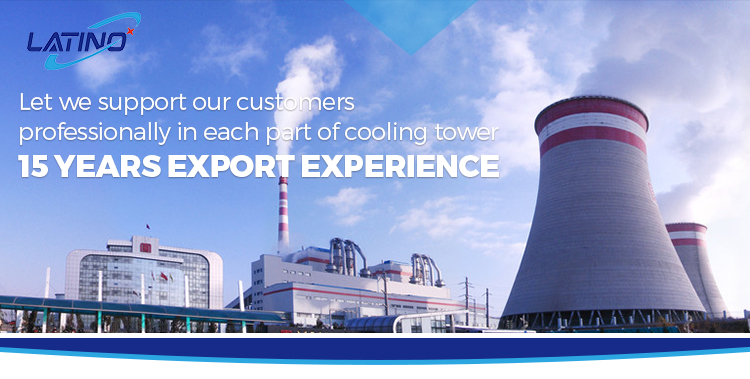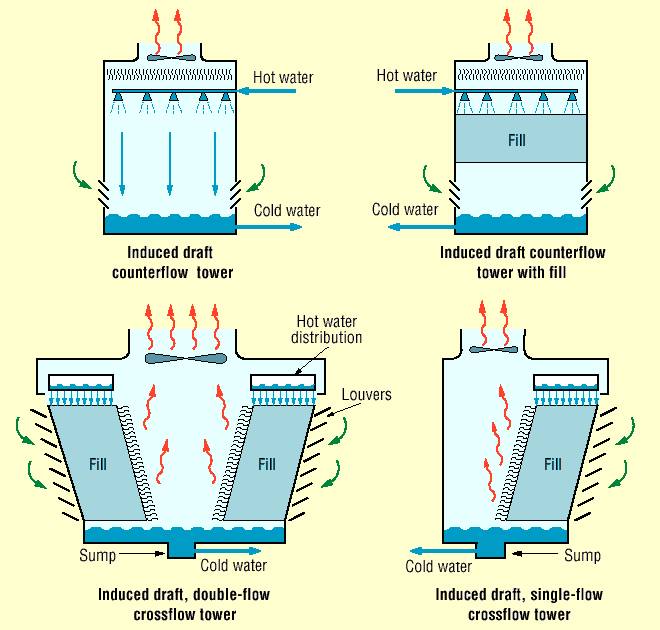
counter flow and cross flow cooling towers
2021-03-06 15:20
The cooling tower devided into cross flow cooling tower and counter flow cooling tower based on the flow for the air and water.
Crossflow cooling tower:
Typically lower initial and long-term cost, mostly due to pump requirements.
Crossflow is a design in which the air flow is directed perpendicular to the water flow. Air flow enters one or more vertical faces of the cooling tower to meet the fill material. Water flows (perpendicular to the air) through the fill by gravity. The air continues through the fill and thus past the water flow into an open plenum volume. Lastly, a fan forces the air out into the atmosphere.
A distribution or hot water basin consisting of a deep pan with holes or nozzles in its bottom is located near the top of a crossflow tower. Gravity distributes the water through the nozzles uniformly across the fill material.
Advantages of the crossflow design:
* Gravity water distribution allows smaller pumps and maintenance while in use.
* Non-pressurized spray simplifies variable flow.
Disadvantages of the crossflow design:
* More prone to freezing than counterflow designs.
* Variable flow is useless in some conditions.
* More prone to dirt buildup in the fill than counterflow designs, especially in dusty or sandy areas.
Counterflow cooling tower:
In a counterflow design, the air flow is directly opposite to the water flow. Air flow first enters an open area beneath the fill media, and is then drawn up vertically. The water is sprayed through pressurized nozzles near the top of the tower, and then flows downward through the fill, opposite to the air flow.
Advantages of the counterflow design:
* Spray water distribution makes the tower more freeze-resistant.
* Breakup of water in spray makes heat transfer more efficient.
Disadvantages of the counterflow design:
* Typically higher initial and long-term cost, primarily due to pump requirements.
* Difficult to use variable water flow, as spray characteristics may be negatively affected.
* Typically noisier, due to the greater water fall height from the bottom of the fill into the cold water basin
Common aspects of both designs:
* The interactions of the air and water flow allow a partial equalization of temperature, and evaporation of water.
* The air, now saturated with water vapor, is discharged from the top of the cooling tower.
*A "collection basin" or "cold water basin" is used to collect and contain the cooled water after its interaction with the air flow.
Both crossflow and counterflow designs can be used in natural draft and in mechanical draft cooling towers.

